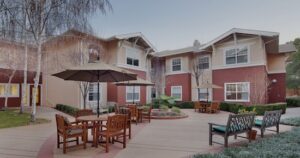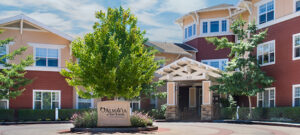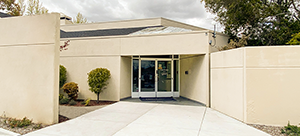Assisted living facilities provide long-term care and housing for older adults. The goal of an assisted living community is to help older adults continue to live as independently as possible, with supportive services around activities of daily living (ADLs).
This can include bathing, dressing, meal preparation, personal care, hygiene, medication administration, and mobility support. Most assisted living facilities also provide a wide range of social activities, a caring community, and a safe environment, so make sure to ask all of the right questions when researching a care facility for your loved one.
When starting to look into the transition of an older adult into a new community, the process can seem confusing. No matter where the older adult is moving to, it can feel overwhelming. Most families have many questions about what to expect and the requirements for living in an assisted living facility.
Requirements for Assisted Living
Below is a basic overview of the requirements to live in an assisted living community. There is a dedicated process to help confirm that your loved one will have the appropriate level of care necessary to feel independent, connect with a community, and live in a safe environment that protects their privacy.
Admission Paperwork
Your first requirement to make the transition to living in an assisted living home is to fill out admission paperwork. This should include some type of resident agreement that will clarify the facilities’ services and the fees associated with those services. At this stage, seniors and family should pull together all medical history to bring it to the next step — the assessment.
Assisted Living Assessment
One of the first steps that any older adult will have to take is to complete an assessment. These are fairly standard but thorough evaluations designed to gauge the older adult’s cognitive and physical health. This evaluation will ensure staff can take your loved one’s needs care of within the specific assisted living facility. Many assisted living communities will have different levels of care, so this assessment can help determine what level of care your loved one needs. The assessment looks at behaviors, medical needs, mental cognition, hygiene and personal care, and special support services.
Behaviors
Communities want to be able to see a general overview of a senior’s behaviors. An assessment will confirm that an older adult can live within the facility’s policies and work well with the staff and other residents in the community.
Medical Needs
This part of the assessment will consider medical history, current health issues, vision and hearing problems, and all of your loved one’s medical conditions that will need care. This assessment is to make sure that the facility can provide the best care possible. During this time, medication distribution information will be written down and discussed.
Mental Cognition
An older adult’s cognitive state will need to be tested to create a plan that offers the most support for an independent lifestyle. This helps prepare the assisted living community’s team to provide specific care to your loved one’s mental capabilities.
Hygiene and Personal Care
Some older adults will need help with personal care and hygiene, including using the bathroom, shaving, hair care, dental hygiene, and bathing. This information needs to be documented to be included in an overall care plan.
Special Support Services
Some people will need special support services from an assisted living community. This might include needing a wheelchair at certain times of the day, a special diet, needing help with oxygen, specific sleep habits, etc.
Need assistance now? Click here to contact us for help or schedule a visit.
Assessments Benefit the New Resident
The goal of all of these assessments is to make sure your loved ones will be able to get the attention and care they need right from the beginning. It also ensures the sometimes difficult transition to a new home is made a little more comfortable as the older adult’s needs are catered to and welcomed when they arrive. These assessments are also flexible; most assisted living communities will continually assess older adults’ needs as their needs change.
Care Plan
From the assessment, the assisted living facility’s team will come up with a care plan. This plan will detail all of the services you will receive, how services will be provided, the cost of care, and who will be handling your care. This plan will continue to be adjusted according to the older adult’s needs which may change.
Financial Plan
Once you know the scope of your loved one’s care plan, you will be given a cost for their care. At this point, you will need to figure out the best way to cover the expenses of an assisted living community. There are many resources available for a more in-depth discussion on how to figure out your financial options.
When it comes to understanding the requirements to live in an assisted living community, each facility will have a similar process, but each will have its own specific requirements. However, transitioning a loved one into an assisted living community has some amazing benefits for any older adult. Elder Care Alliance communities offer a variety of life-giving programs for those in our senior living residences:
- Brain fitness activities
- Tai chi, yoga, and other exercise programs
- Trips to local museums, restaurants, and entertainment
- Art classes in community activity rooms
- Live performances from area artists, musicians, and dancers
- Intergenerational experiences bringing together people from ages 4 to 104
If you or a loved one is ready to take that next step and move to a senior community living facility, Elder Care Alliance is here to guide you through all of the requirements to transition your loved one into a caring, safe, assisted living community. We take pride in offering something that will benefit anyone no matter where they are in their advanced year. Contact one of our professionals today to get answers to any questions you have about our requirements for assisted living communities.




















